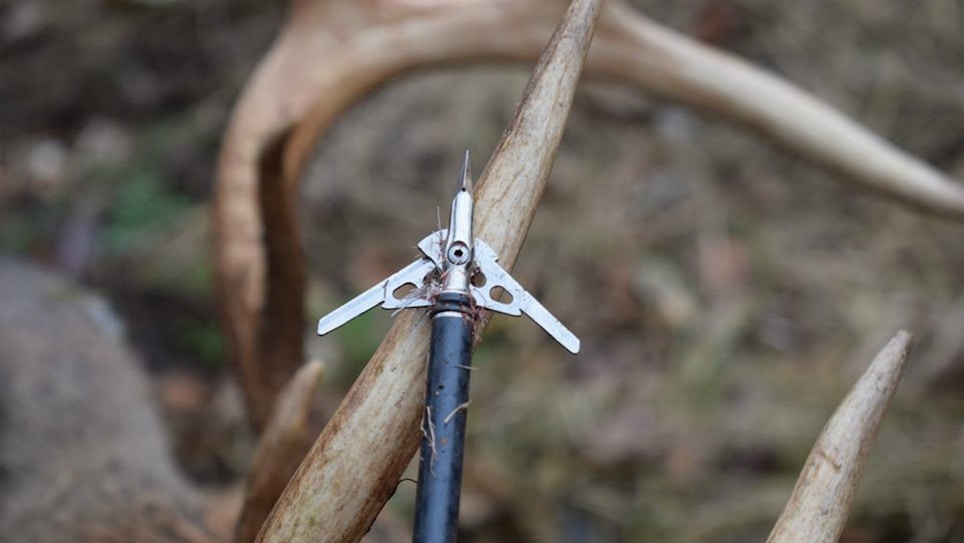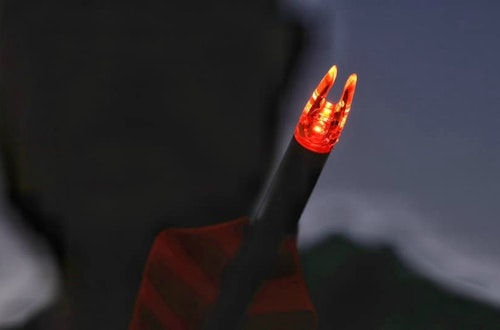No question about it, the readers of Bowhunting World are serious gearheads, something made clear by your favorite product selections in this issue. Me too; I love technological innovation. Though I have to admit, I look at new gear with a skeptic’s eye. Decades ago, I had to be dragged into giving up my aluminum arrows and replaceable-blade broadheads in favor of small-diameter carbon shafts and mechanical broadheads (though I still hunt with a replaceable or fixed-blade head from time to time).
Lately, I’ve been wondering about what others choose to use. When selecting new archery equipment, there’s a cost analysis to consider, and at some point, the cost/benefit ratio of whether or not dropping top dollar on the “best” gear will give you enough of an edge over the “good” or “better” alternative to justify the purchase.
That brings me to the ends of a hunting arrow — the broadhead and nock. And I’m wondering, how many of you have done the cost/benefit analysis and decided to hunt with high-dollar mechanical broadheads and lighted nocks?
Neither concept is new. Archers experimented with expandable broadhead designs for decades, including the 1956 Mohawk, the 1959 Geronimo, the 1972 Pioneer Game Tamer and the 1983 Viper, but it was Greg Johnson and his Rocket Aerohead in the late 1980s that was the first successful commercial expandable broadhead. Today, the modern mechanical broadhead — which experienced performance problems early on — is the best-selling design type in North America, though not by much, as replaceable- and fixed-blade broadheads still have a large following.
The first expandables held blades in place with a rubber band, later improved to be a locking collar of some sort on most models. Back in 2001, my friend Bruce Barrie and his company Rocky Mountain Broadheads (started by his dad, Bob), came out with a Snyper broadhead featuring the “Cam Action Blade System,” with rearward sliding blades. That technology was later sold to Rage Broadheads and licensed by other companies. Today, some mechanicals have rearward sliding blades and don’t use any rubber bands or collars to keep their blades in place, like the Rage Hypodermic NC. The SEVR Broadheads line features a little set screw that makes it possible to practice with the same broadhead you’ll be hunting with without blade damage, another cool innovation that’s been long overdue.
The original lighted nock, the Lumenok, was spawned back in 1998, when bowhunter Curtis Price grunted up a whitetail buck, took a shot and watched the deer race off. Not knowing if he’d hit or missed, it took him a long time to find his arrow and confirm that it had been a clean miss. As he drove home, his mind began racing. He thought, Wouldn’t it be great if I had a nock that lit up, allowing me to not only see my arrow in flight, but to also mark the location of the arrow if I missed? And then, after a visit with his brother Eric, the light came on — no pun intended. In 2002, the Burt Coyote Company was born.
Mechanical broadheads and lighted nocks have had to overcome acceptance hurdles by the public, state game departments and the Pope & Young Club, which for years outlawed their use while archaic thinking caught up with technological advancement. With mechanical broadheads, it was the fact that many of the early designs weren’t completely reliable. With lighted nocks, it was that adding anything electronic to the bow-and-arrow setup was deemed unethical. That’s all mostly gone by the wayside today with the exception of Idaho, which for some reason I can’t fathom, still outlaws both. Washington legalized expandables in 2015, Oregon followed in 2019. The last to legalize lighted nock use were Colorado (2015), Oregon (2016), Montana and Washington (2017).
Neither of these two products are cheap. On Lancaster Archery’s website here’s what some popular items cost:
Lighted Nocks
- Nockturnal FIT Universal Lighted Nocks; $29.99 (3-pack)
- Lumenok Signature Lighted Nock Combo Pack; $44.99 (4-pack; combo pack includes one Arrow Puller/Lumenok Extinguisher, value $10, plus replacement batteries, value $5)
- GloryNock G Lighted Nocks; $29.99 (3-pack)
- Nock Out Contender Universal Lighted Nocks; $29.99 (3-pack)
Expandable Broadheads
- Grim Reaper Pro Series Whitetail Extreme Broadheads; $44.99 (4-pack)
- Rage Hypodermic NC Broadheads; $44.99 (3-pack)
- Rage Hypodermic Trypan Broadheads; $49.99 (3-pack)
- NAP Killzone Broadheads; $39.99 (3-pack)
Add that $15 for each broadhead and $10 for each lighted nock (more or less) to the cost of a high-tech carbon shaft — at Lancaster Archery, Easton 5mm FMJ Factory Fletched Arrows cost $87.99 a 6-pack, Gold Tip Hunter Pro Fletched Arrows run $169.99 a dozen, and Carbon Express Maxima RED Fletched Arrows cost $89.99 for a 6-pack, for example — and all of a sudden, every arrow in your quiver costs you about $40, plus tax of course. That’s not chump change!
Still, there’s no doubt that mechanical broadheads fly like lasers and cut huge holes, and that lighted nocks help pin-point a hit (or miss) on the intended target. And yet, using less-expensive broadheads and nocks (and arrow shafts, too) still gets the job done for millions of bowhunters annually.
What about you? Do you use expandable broadheads and/or lighted nocks today? Any problems with either? Have they improved your success? Drop me a note at editor@grandviewoutdoors.com, I’d love to hear your thoughts.







